Harshita Kale
|
June 11, 2025
|
10
min read
Are superfoods real—or a marketing gimmick?
Unpacking how exotic and everyday ingredients are elevated to ‘super’ status
Read More

Unpacking how exotic and everyday ingredients are elevated to ‘super’ status
Eat quinoa for breakfast, and you’re sorted for protein. Slather some avocado and a sunny-side up on warm toast, and you have an aesthetic picture ready for your social media. Top your strawberry shake with chia seeds and blueberries, and you’re halfway to your summer body.
The availability of ‘superfoods’ is a comforting thought. That you can load up your cart with a few ingredients which will multiply your antioxidant intake, lower your cholesterol, keep cancer at bay, and boost energy all at once. But beneath all those glossy promises lies a more complicated—and slightly disappointing—reality. Superfoods…might not even be real.
There’s no standardised definition for superfoods. Usually, an ingredient is promoted to superfood status when it has high levels of nutrients, is linked to disease prevention, and ostensibly offers extraordinary health benefits. Its inclusion in the Merriam-Webster Dictionary confirms how the term has made its way into our food lexicon. “A food (such as salmon, broccoli, or blueberries) that is rich in compounds (such as antioxidants, fibre, or fatty acids) considered beneficial to a person’s health.”Antioxidants, fibre, and fatty acids became sought-after in food after it was discovered that they play a significant role in heart health, and consequently, could help in increasing life expectancy.
The origins of the term, and how the humble banana became pedestalised, is telling of how superfoods continue to occupy an ambiguous space between science and advertising.
One of the first usages of the term “superfood” dates back to the early 20th century, around World War I. And it wasn’t food scientists or dieticians going gaga about discovering a mystical, miraculous ingredient. The United Fruit Company in the US started advertising bananas as ‘superfoods’ to profit from their massive banana imports. Their campaigns were a hit—they promoted bananas as cheap, nutritious, and versatile foods in a struggling economy. The term gained greater legitimacy after physicians started publishing their findings in medical journals. Soon, bananas were a dietary staple across the US.
The origins of the term, and how the humble banana became pedestalised, is telling of how superfoods continue to occupy an ambiguous space between science and advertising. There is no clear evidence that foods labelled as superfoods are any better than the locally grown and sourced produce that we consume as part of our everyday diets. In fact, the term ‘superfood’ is regulated in parts of the world like the European Union. Since July 2007, EU regulations have prohibited the marketing of products as "superfoods" unless accompanied by a specific, authorised health claim supported by credible scientific evidence. Food safety regulation and enforcement is often inconsistent in India. One consequence of this has meant that superfoods have become ‘super-business,’ as leading celebrity nutritionist Rujuta Diwekar puts it.
Part of what makes superfoods so tricky to understand is that food conglomerates sponsor research to promote particular foods. Unsurprisingly, industry-funded research tends to have results that favour the products they are marketing. Author of Food Politics: How the Food Industry Influences Nutrition and Health and Professor Emerita of Nutrition and Food Studies at New York University, Marion Nestle, found that of the 76 industry-funded studies she examined, the results of 70 favoured the sponsor’s product. “Popular claims such as grapes and walnuts are superfoods, wine has anti-ageing properties or that dark chocolate is good for your heart were found to have been funded by or its researchers closely associated with organisations such as Mars Inc., California Walnut Commission and even Coca-Cola in a particularly well-publicised research on obesity and healthy eating.”
Most conventional superfoods are also imported—kale, acai berries, avocado, seaweed, quinoa. These are branded as exotic and have a premium price tag, both of which point to the link between aspirational eating and upwards socio-economic mobility.
But it’s not just an industry conspiracy. Even independent studies on nutrition science examining how one superfood affects the body often don’t compare it to eating an ‘ordinary’ food which makes it hard to know how effective it really is, or if it actually has any special benefits in a larger context. Studies also often test ‘superfoods’ in unrealistically high amounts—like asking people to eat two cups of blueberries every day for a month to examine their impact on blood pressure. But real diets are far more varied – people eat a variety of fruits, vegetables, grains and processed foods every single day. This narrow focus of studies can therefore skew results and not reflect how people actually eat. In a way then, is nutrition science in itself being manufactured?
Also read: Detox teas: Slim claims, heavy consequences
Through the ages, food advertisements have carefully monitored trends surrounding body image. In the 1980s, fat was the enemy—hundreds of products were posited as low-fat or fatfree. What labels didn’t mention was the extra sugar and additives used to make up for it. As sugar intake soared, so did health issues—and ‘sugar-free’ became the new buzzword. Superfoods are just the latest spin in this same cycle. With the ‘skinny trend’ being back and all over social media, people are looking for a magical cure—and superfoods are perfect to cater to this demand.
Mumbai-based gut microbiome specialist Munmun Ganeriwal says that clients have been curious about superfoods for about two decades, but there has been a shift in their objectives. “Earlier, people were more concerned with weight-loss and aesthetics. Post-pandemic, there has been a decided shift to improving energy, immunity and overall fitness.”
Superfoods are largely a metropolitan phenomenon. Their demand and consumption in India is mostly in large, urban cities. Most conventional superfoods are also imported—kale, acai berries, avocado, seaweed, quinoa. These are branded as exotic and have a premium price tag, both of which point to the link between aspirational eating and upwards socio-economic mobility.
Ingredients that have been staples of Indian kitchens are now suddenly labelled as a ‘superfood’ and pushed into a ‘superior’ category. In reality, any food that is good for health is a superfood. Moreover, the list of superfoods keeps changing. Ghee was considered a fattening agent and a deterrent for health until a few years ago. Now, it’s all the rage.
Food writer and Food And Beverage marketing specialist Kalyan Karmakar talks about how campaigns are strategically designed for the upper-middle class urban resident: “Most of these ads target the globalised, English-speaking consumer. They have greater purchasing power, and are a lot more likely to invest in health.” Health claims bump up these foods on their desired demographic’s radar—studies on consumer behavior show that people are willing to pay more money for foods they perceive as healthy and which have nutritional research backing them.
But it’s not just ‘exotic,’ imported products that are riding the superfood wave anymore. Foods like ghee, turmeric and moringa that are added to podi and khichdi, sprinkled into lukewarm milk, and stirred into aromatic sambar have been catapulted to superfood status in the last two decades.
“There is no fixed definition of superfood,” Ganeriwal says. “Ingredients that have been staples of Indian kitchens are now suddenly labelled as a ‘superfood’ and pushed into a ‘superior’ category. In reality, any food that is good for health is a superfood. Moreover, the list of superfoods keeps changing. Ghee was considered a fattening agent and a deterrent for health until a few years ago. Now, it’s all the rage.”

If these ordinary ingredients have been part of our diet for generations, how do marketing campaigns elevate them into ‘superfoods’? “The idea is to take a food away from its natural form and transform it into a completely different product—like amla capsules, jamun supplements or moringa powder. You combine the aura that comes with labelling something as a ‘superfood’ by making functional claims like it being ‘reinforced’ or ‘concentrated’ that transport it beyond its original avatar,” Karmakar says.
This is also why capsules and supplements have skyrocketed in popularity. “People are short on time, and often cannot afford to cook a well-balanced meal. Supplements and capsules make you feel like you’re getting the benefits with minimal effort,” Chandigarh-based nutritionist Lavleen Kaur says. Celebrity endorsements and nutritionist-influencers on social media have only heightened the appeal of superfoods, reinforcing the belief that they’re a panacea for all health woes.
Also read: How food inflation is squeezing Indian households
In some cases, the rise of superfoods has opened up new opportunities for farmers. A boost in the demand for makhanas and moringa has encouraged next-generation farmers to continue in their profession. Hardy crops like quinoa and chia thrive in arid soils where little else can grow. In 2013, the United Nations declared it ‘The International Year of Quinoa’. By this time, the grain was already being imported by India, and –featuring on the shelves of gourmet grocery stores and in fine dining vegan menus. Then, in 2014, the Andhra Pradesh government launched Project Anantha, and distributed quinoa seeds to farmers in the region of Anantapur to revive agriculture in the drought-prone village.
Project Anantha flourished for a few years. Quinoa sold for Rs 70–90 per kilo from 2014-16. But by the end of 2017, quinoa was being grown over 350 acres as compared to the original experimental area of 50 acres. Moreover, Andhra Pradesh lost its sole-producer tag for quinoa and experimental trials started in Rajasthan as well. There was too much unplanned cultivation and production, and the state government had simply not invested in marketing as it had done in production. Superfoods were still largely a metropolitan phenomenon—there was just not as much demand. Quinoa prices crashed to Rs 10 per kg by 2018.
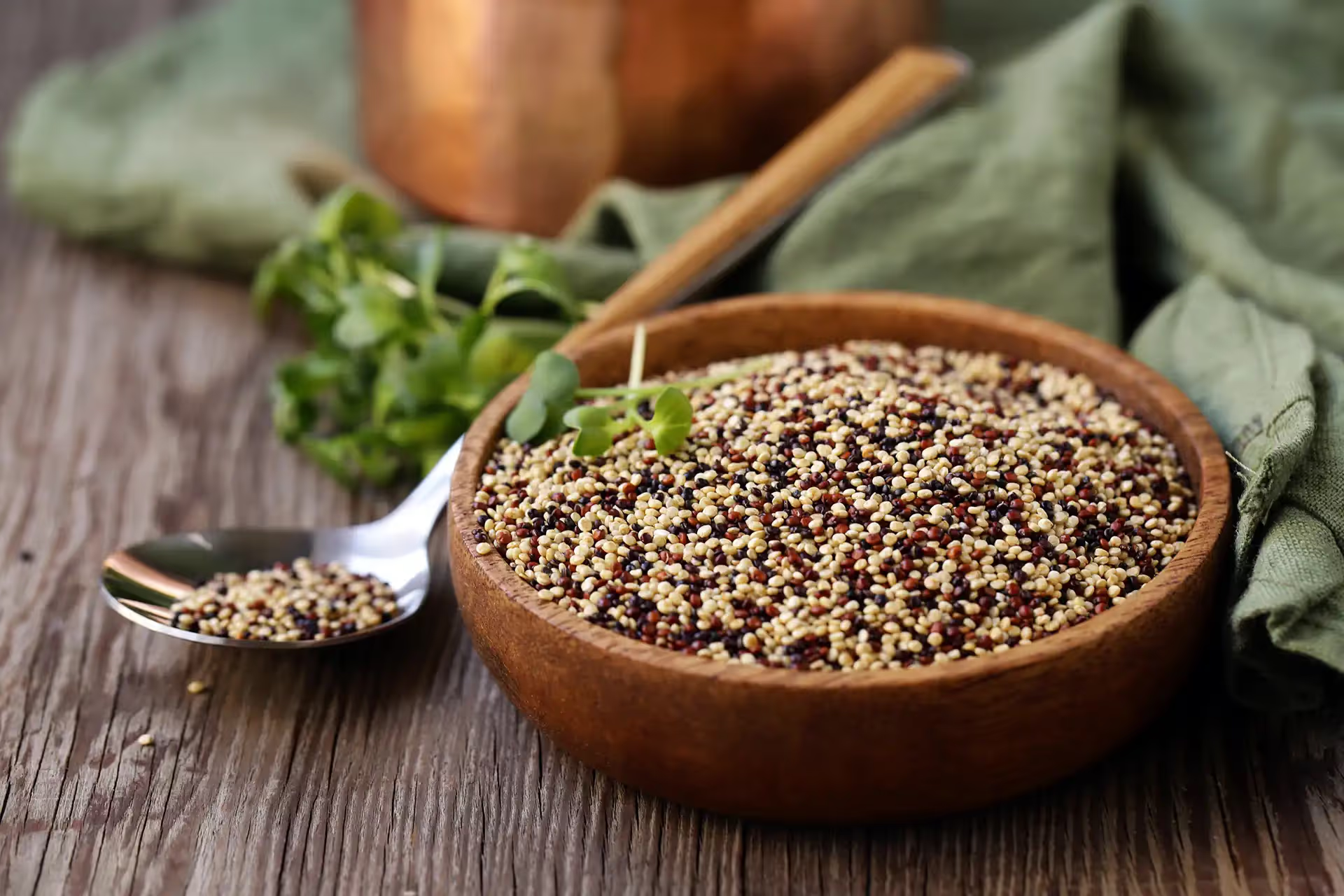
Superfoods have affected local ecosystems in other ways, too. A growing appetite for imported foods in particular, has had wide implications across global agricultural landscapes. Once biodiverse plots are increasingly being replaced by monoculture plantations focused on a single ‘super’ crop. This shift has not only strained soil and water resources but also disrupted traditional farming systems and livelihoods.
“Growers have been cutting down swaths of forest to make room for more fruit trees in the state of Michoacan, Mexico, the world’s avocado capital. Today, avocados occupy approx. 340,000 acres of land.” Worse still, the humble avocado—once a staple on Mexican plates—has been priced out of reach for many, thanks to the sky-high demand outpacing supply and turning this everyday fruit into a luxury item for locals.
An increase in monoculture is just one unseen consequence of the global fad of superfoods. Indigenous Indian communities have always foraged in forests for sustenance. Health and wellness companies have suddenly ‘discovered’ the benefits of some of these wild, exotic ingredients and are pushing them as superfoods, pandering to the urban, elite consumer. This means that urban residents are increasingly competing with indigenous communities for food sources, with the latter having to sell what historically constituted their diet at throwaway prices and turning to less nutritious and non-traditional foods.
To so brutally villainise superfoods would be to risk de-legitimising them completely. Superfoods ARE healthy foods. For instance, avocado is indeed loaded with healthy fats, and grapefruit is a great source of vitamin A and C, and most superfoods are high in antioxidants. However, many plant-based foods with colour have antioxidants. Staples like turmeric and carrot, containing curcumin and beta carotene respectively, both have antioxidant properties.
Kaur says, “I have poha with avocado and cucumber. Superfoods add variety and additional roughage to your plate. But if you’re drinking jeera/ajwain water, eating fruits, nuts and seeds, you don’t need to go out of your way to consume imported superfoods.” Ganeriwal adds, “There’s no harm in being curious about superfoods. But as regular, healthy people, not pursuing them is not going to make us deficient. You don’t need to fear ‘missing out’—and you definitely don’t need to chase Western superfoods”.
“The Indian plate is so wonderfully diverse, nuanced and seasonal,” the Mumbai-based dietician says. “Take gond (a crystalline herb acquired from the sap of the plant Locoweed)—this jelly-like substance cools your body in the summers and helps keep it warm in the winters.”
There’s no harm in being curious about superfoods. But as regular, healthy people, not pursuing them is not going to make us deficient.
Nutrition science is extraordinarily complex—and the truth is that no single food, no matter how rich in vitamins and antioxidants, can replace a balanced diet combined with regular exercise. “Any whole foods that are minimally processed are going to have a positive impact on your health,” Ganeriwal says. Conventional superfoods can also blind us to other ordinary foods that may be equally as nutritious and flavourful. These locally grown and sourced ingredients may be hiding in plain sight in our kitchens and markets.
Also read: Mindful eating: A wellness tool, or trendy byte?
1. Kombucha vs Buttermilk
Kombucha may be in vogue for claims about its probiotic content. However, the standards for probiotic content in Kombucha are largely unregulated—allowing manufacturers to make unchecked claims. Buttermilk, on the other hand, is a gut-friendly, affordable, homemade alternative, minus the added sugars.
2. Quinoa vs Amaranth
Amaranth (Rajgira) packs more protein, magnesium, iron, and potassium than quinoa—and at a fraction of the cost. Being a local grain, it can be easily found in stores or even grown at home.
3. Kale vs Beet Greens
Kale is hyped as the nutritional powerhouse of all leafy vegetables. But beet greens, which are often discarded,are just as impactful. They’re low in calories, rich in vitamin E and potassium, and are far more accessible.
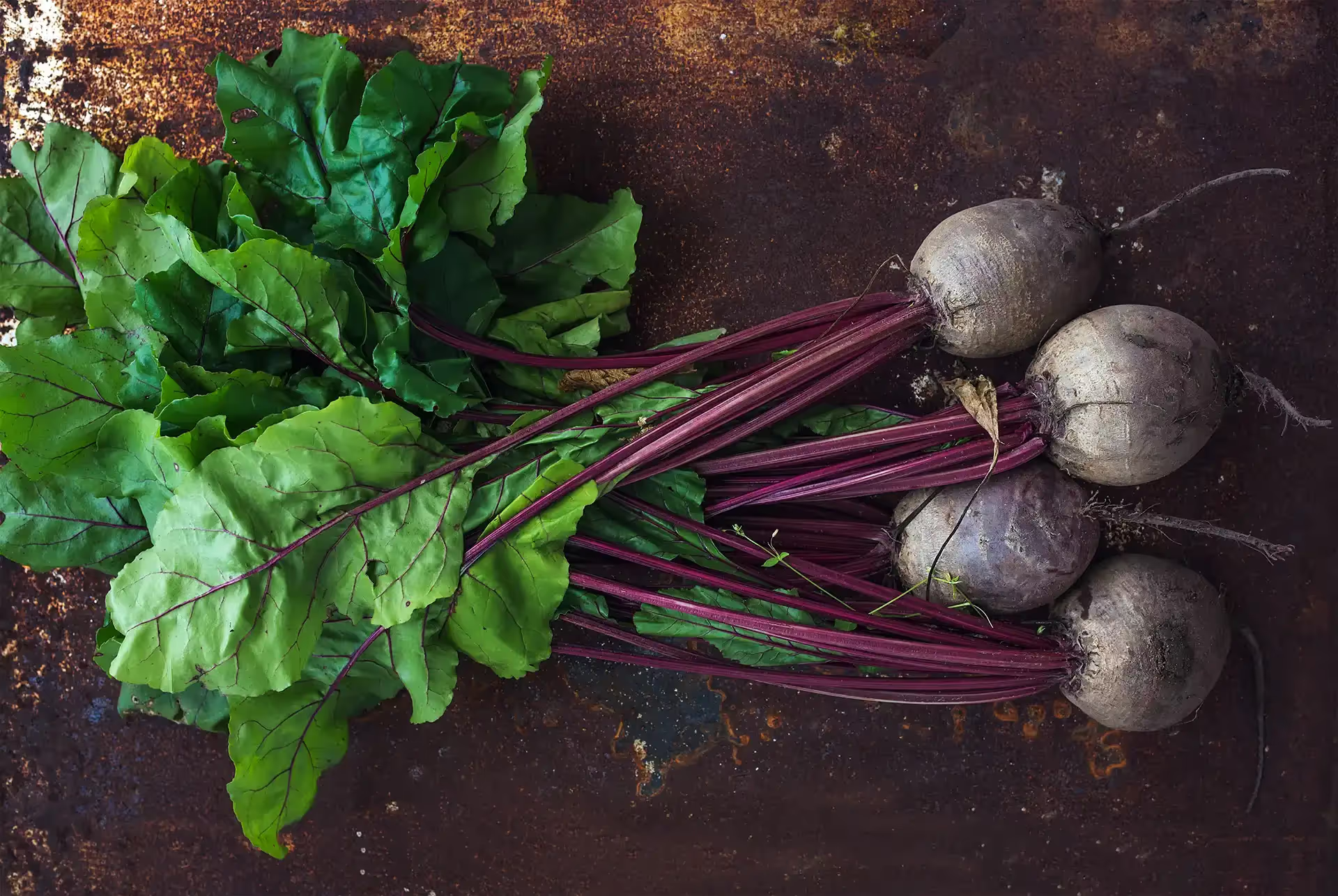
4. Goji Berry vs Jamun
Goji berries may be trendy, but jamun is India’s original superberry. It boosts immunity, balances blood sugar, and is packed with iron, calcium, and vitamin C. Enjoy the tartness and remember the taste of childhood.
5. Matcha vs Moringa
Matcha might be the new, cool Japanese kid on the block, but moringa is desi and delivers more—30x the protein, 10x the fiber, and 100x the calcium, as celebrity nutritionist Pooja Makhija puts it. From leaves to seeds, it’s a super tree, not just a superfood.
What’s the bottom line? Beneath hyped-up health claims, expert nutrition advice hasn't changed much. "The basic principles of eating healthfully have remained remarkably consistent over the years," Nestle, who has researched extensively on the superfoods phenomenon, says. "Eat a wide variety of relatively unprocessed foods in reasonable amounts.” Take fads with a grain of salt and focus on balance—because good health can’t be contained in a buzzword.

Hacks involving the flower and roots can boost crop and soil health
Marigolds, with their bright sunny blooms, defy the typical, easy withering fate of flowers. Often compared to the sun’s eye in poetry, they feature in cultures worldwide, and are particularly revered in India. From Varanasi’s street stalls to the temple steps of Tamil Nadu, these flowers—heaped or strung in garlands—honour both the living and the dead.
Growing them requires little care, and their flowering season lasts year-long. It’s a well-known piece of advice among farmers to plant marigolds alongside tomatoes, cabbage, and strawberries to keep plants safe.
Besides finding a spot in the cultural landscape, marigolds are also hard at work in fields. Their roots release a substance that chemically controls several species of nematodes (worm-like creatures) or invisible pests that feed on plant roots, stunt growth and often cause the plants to die. Marigolds are most effective in controlling the common meadow and stylet nematodes. In the first year of planting marigolds, they start repelling pests. In the second year, the leftover substances in the soil become even better at repelling. This effect can last into the third year, too.
Why do marigolds work for some who till the land, but not for others? Because the strength of their exudate depends on the variety. Another reason why marigolds are not suitable for every garden is that their roots produce a sulfur compound called thiophene, which cannot be handled by all plants, like roses.
With so much hybridisation, many of the plants’ basic characteristics have been altered, not least of which is the distinctive—and to some, offensive—odour. This smell of many hybrid marigolds is a natural insect repellent. Fascinatingly, marigolds have been grown at the border of rice fields at Uttarakhand’s Navdanya Biodiversity and Conservation Farm, to deter aphids, mosquitoes, nematodes and rabbits.
However, there are no absolute rules. Interestingly, not all insects are repelled by marigolds. For instance, Japanese beetles are drawn to their scent. In this case, marigolds can be strategically used as trap crops to lure beetles away from more vulnerable plants.

Two types of marigold commonly available are French marigold (Tagetes patula) and pot marigold (Calendula officinalis). While French varieties are often toxic (to both humans and pests), pot marigolds are edible and can be used in salads or as a natural food colouring. Since they are similar in appearance, understanding which variety to use when and where is crucial.
Also read: These ducks mean business in paddy fields
Marigold’s sagey scent can also be used as a homemade insect spray, as an alternative to stinkier ones. Here’s a simple DIY method:
Pro Tip: Add coriander to the mixture to deter pests that might otherwise be attracted to the marigolds themselves. Be cautious when spraying, as marigolds can attract bees.
Also read: The surprising culinary uses of jasmine flower
More uses
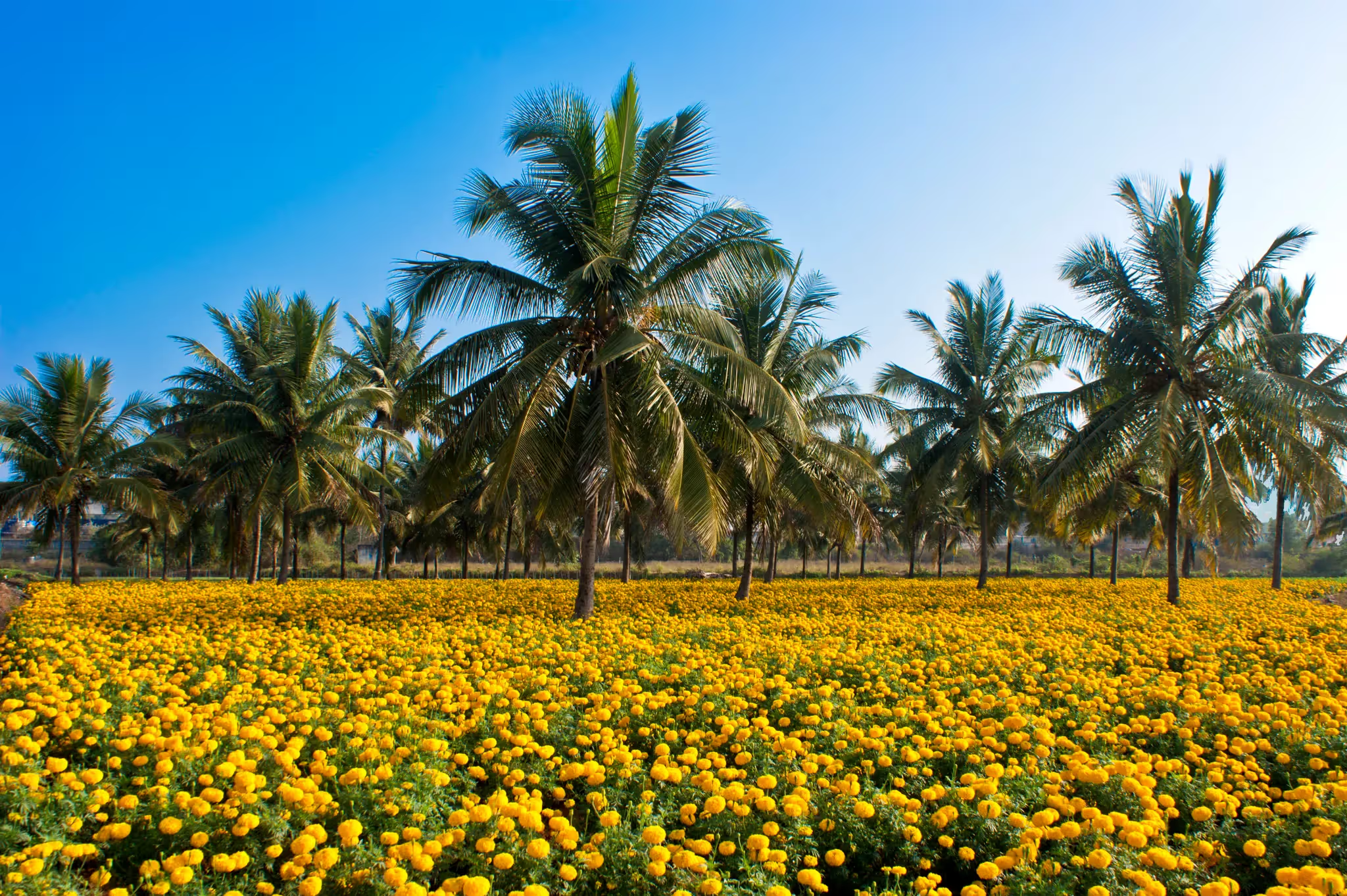
Marigolds can serve as a companion, especially since many bedding plants don’t handle transplanting well once they bloom. One of the marigold’s standout qualities is how easily it adapts to newer settings. Unlike many flowering plants, it can be transplanted with ease even when in full bloom. Whether they are moved from garden beds into containers, or brought indoors, they adjust with minimal fuss and continue to thrive.
They’re not picky about soil either. While marigolds will grow in almost any type of soil, they do best in well-drained, compost-rich soil under full sunlight. Adding a bit of compost or aged manure can give them an extra boost. When transplanting, keep them at the same soil level as before, press the soil firmly around the base, and water thoroughly. More often than not, the plants won’t miss a beat and will look like they’ve always been there naturally.
Despite being frost-sensitive with a propensity to turn brown at temperatures below 0°C, marigolds are able to adapt for much of the growing season. If it were not for the nursery industry's constant development of flamboyant new hybrids, they may have been seen as vivid weeds.
Also read: Why neem oil is the OG pest buster
(Banner image credit: Neerja Deodhar)

Favourable climate and access to compost and diverse species have changed the game
There are many reasons to love mushrooms. These resilient, shape-shifting life forms have long occupied a strange in-between space—of being neither plant nor animal, invisible until they erupt, uninvited, from hidden corners, forest floors and compost heaps. Some are hallucinogenic, while others are deadly. They thrive where decay festers, and they bloom without a warning. However, no matter how loved or detested, they are definitely having their moment.
In one part of the world, mushrooms are being studied for their potential to become customised antibiotics; in another, they’re being pressed into bricks to build homes. Some strains filter drinking water, and others float in orbit as part of experiments to develop self-sustaining ecosystems for deep space.
These are organisms “eating rock, making soil, digesting pollutants, nourishing and killing plants, surviving in space, inducing visions, producing food, making medicines, manipulating animal behaviour, and influencing the composition of the earth’s atmosphere,” writes one mycologist, rhapsodising accurately the many facets of fungi.
But mushrooms remain misunderstood. Even in India, where the forests of the Western Ghats and the North East hills host a mycological diversity, a large part of the population remains uneasy about mushrooms. They are seen as a little too alive, a little too strange. Even as these anxieties linger, the country has found its knack in growing these fungi for food and pharmaceuticals.
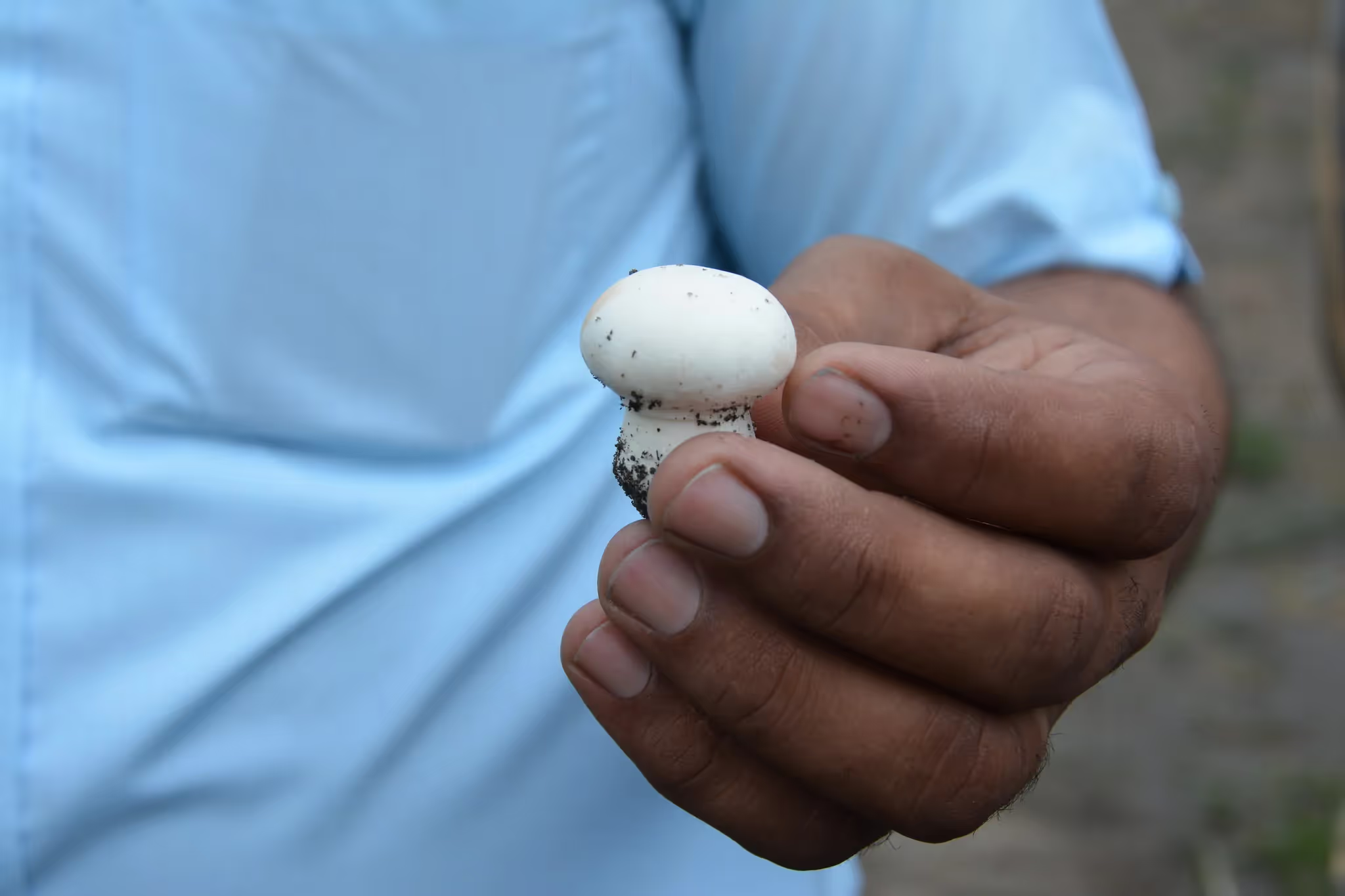
Mushroom cultivation in India has a curious lineage, one that begins in the cool slopes of Solan, Himachal Pradesh (now known as the ‘Mushroom City’ of India) sometime around the 1960s, under the patronage of the Food and Agriculture Organisation. Before that, the production of fungi remained shackled by cultural fear. It wasn’t until the economic liberalisation of the 1990s when markets opened and tastes widened that the mushroom cultivation gained momentum.
Historically, since the colonial era, it was the native tribes who understood these organisms best. Under British colonial rule, mushrooms were dismissed as the British saw them as “pariahs of the plant world.” When French cuisine began to cast fungus in a flattering light, the British palate began to shift. By the 19th century, mushrooms had become an emblem of good taste in a meal.
In recent years, these near-miraculous organisms have quietly found their place in India’s agrarian community, thanks to their minimal demands—no sprawling fields or heavy investments are required. Across the country, success stories of mushroom farming, flourishing right from the four walls of homes, have emerged.
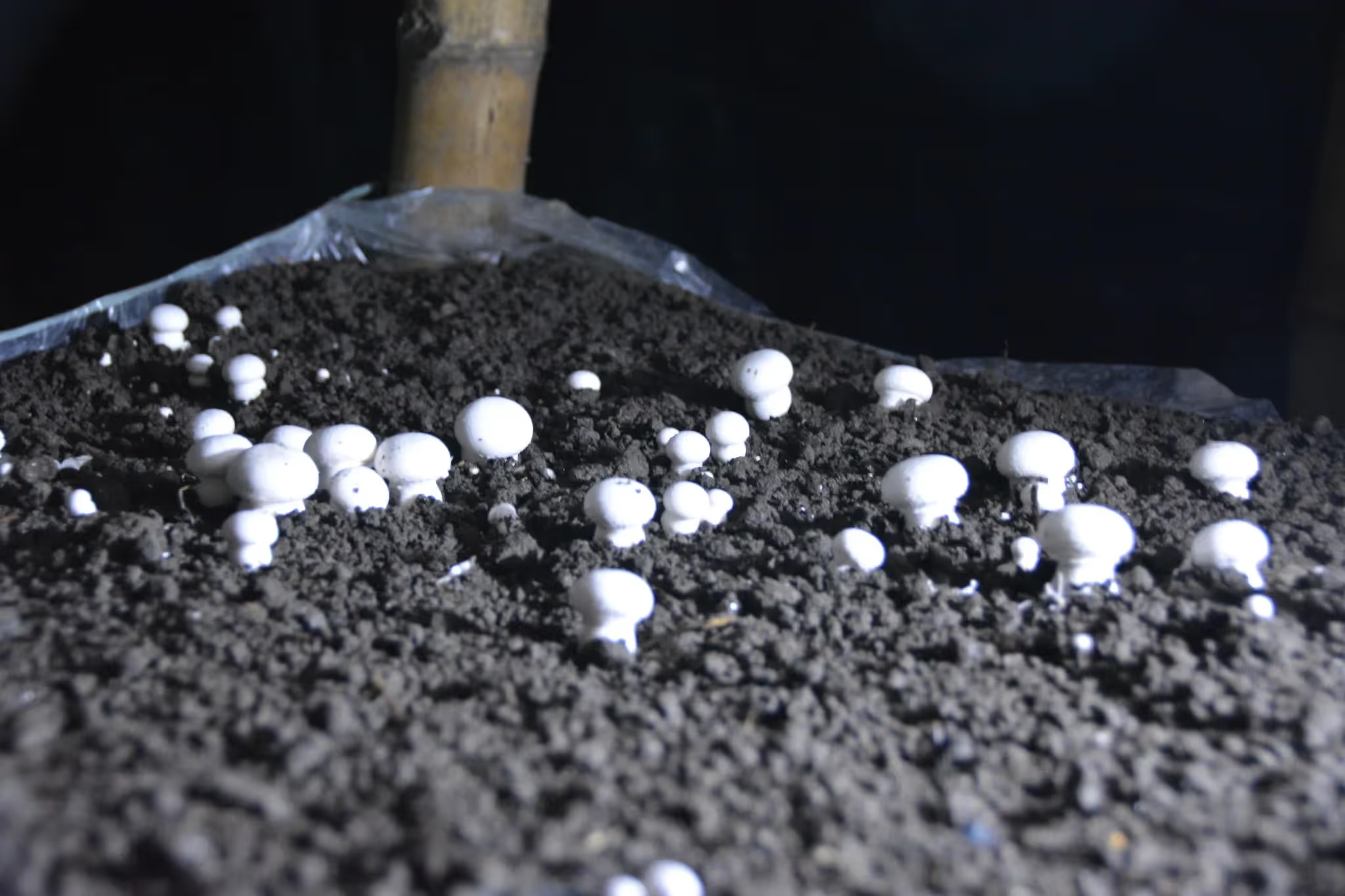
At the same time, mushrooms are catering to the growing demand for organic and unprocessed food. Known for their rich nutrient profile, they are seeing a gradual increase in per capita consumption in India, which currently averages around 80 grams. However, this remains significantly lower compared to countries like China, where consumption reaches 1.6 kilograms, and the US and Europe, where it ranges between 1.5 to 3 kilograms
Also read: Why an ex-banker is investing in microgreens
“India has all the required elements for becoming a superpower in mushroom production,” says Rouf Hamza Boda, a self-taught mushroom researcher who has spent two decades identifying more than 100 species across the highlands of Jammu and Kashmir. “India has huge wild mushroom diversity, lots of composting material, cheap labour, and diverse climatic conditions,” he added.
Gucchis, the honeycomb-headed mushrooms found in the forests of Jammu and Kashmir, are among the world’s most expensive fungi, fetching up to a whopping ₹40,000 per kilogram. Foraged by locals in remote areas, these mushrooms are often consumed raw or preserved using traditional techniques before making their way to urban markets. However, this prized variety is now under threat from the region’s rising temperatures, which are impacting its natural growth cycle.

Meanwhile, the North-East of India has its own catalogue of fungi. To address the region's limited knowledge about edible versus poisonous varieties which is a gap that has led to fatal consequences, mushroom experts Stephen Axford and Catherine Marciniak were invited to document and identify safe mushrooms. Their journey took them through Assam, Meghalaya, and Arunachal Pradesh, helping to map out the region’s rich yet underexplored fungal diversity. In water-scarce areas, mushroom cultivation has been promoted in the region through Self Help Groups (SHGs), offering an effective way to boost local livelihoods.
In Chhattisgarh, a rare mushroom known as Sarai Boda grows naturally in the forests of Dhamtari. This variety commands a premium, priced as low as ₹300 per kilogram in rural areas and soaring to ₹2,000 per kilogram in metro markets.
Since the crop is fragile, highly perishable, and sensitive, a minute change in temperature or failing to reach the customer counter in time can prove to be stressful.
Across India, fungiculture has become a tool for rural development. From the villages of Bihar, Jharkhand, and West Bengal to individuals making mid-career transitions, mushroom farming is gaining traction. It's not just SHGs fueling this change, entrepreneurs and startups are also getting on board. Mushroom-growing kits have even made an appearance on Shark Tank India, and established companies like Dr. Kurade’s have been investing in the sector since as early as 1994.
It helps that mushrooms have a short growing cycle. A farmer can go from substrate to sale in just a few weeks. But experts have cautioned against over-enthusiasm time and again. Since the crop is fragile, highly perishable, and sensitive, a minute change in temperature or failing to reach the customer counter in time can prove to be stressful.
Indeed, mushrooms are not forgiving. They demand care, control, and near-constant surveillance. Fans pull air across moist pads in greenhouses to maintain temperature and humidity. Carbon dioxide levels are carefully monitored. One must be part scientist, part gardener, and part soothsayer.
Recognising the potential in the venture, the Indian government subsidised mushroom cultivation, providing up to ₹10 lakhs of loans and a 50% discount on compost. The states have also introduced aid for local farmers. For instance, in Bihar under the “Mushroom Kit Vitaran”, one can avail at a 90% subsidy alongside training support. The state has emerged as a leader in mushroom production since 2021 with a production of almost 42000 tonnes in between 2023-24.
Also read: The fragile future of Guchi mushrooms
Parimal Ramesh Udgave, a microbiologist from Maharashtra, knows this all too well. In 2019, he founded Biobritte Agro Solutions with the goal of merging biotechnology and business. Today, his enterprise grows, dries, and processes mushrooms into powders and health supplements.
Udgave represents a new breed of Indian entrepreneurs who look at fungi not just as food, but as the foundation for various alternative industries. Biobritte’s shelves are filled with bags of shiitake, reishi, oyster, and button mushrooms. His lab tinkers with substrate mixes and spawn quality. His team teaches others how to grow, troubleshoot, and profit from this ancient life form.
“People see mushrooms as a fast, money-making business. But it must also be combined with technical skills,” he clarifies.
For beginners, a piece of advice from a farmer from Ernakulam is that oyster mushrooms are the best to begin with, as they give quick results and a reasonable quantity. These mushrooms are ideal for newcomers as they offer an accessible entry point into mushroom farming with relatively little effort. Getting started in mushroom farming isn’t difficult, but requires consistency and precision. Ideally, the farm should be close to the home; cultivation is hands-on, and timing is everything.
India’s climate allows for a variety of mushrooms to be grown, depending on the region:
Also read: Black Soldier Fly: A hero of insect farming and waste management
Mushroom cultivation begins with compost, a nutrient-rich substrate often made from straw or sugarcane bagasse. According to mycologist Arun Gupta, wheat straw, though scarce in India, is ideal. Moisture is key; nutrition flows from compost to the mushrooms, with optimal moisture levels between 66–70%.
Next comes the process of spawning, where the “seed” of mushrooms is mixed into the compost. Depending on conditions, methods include surface or double-layer spawning. High-quality spawn is costly to import, so some farms opt to clone it, rejecting batches with slow growth or deformities.
After colonisation, casing soil is applied using a 4–5 cm layer of sterilised peat moss and lime, or loam mixed with sand or cow dung—added to retain moisture and trigger fruiting. Temperature (23-28°C), humidity (85%-90%), and carbon dioxide levels are closely managed for optimal growth.
Cropping begins 15 days after casing, as mushroom caps become visible. When they reach a length of 2.5-4 cm, harvesting can be done gently by hand. Mushrooms are twisted out carefully, preserving the casing, which is refilled and watered to allow multiple harvests in one cycle.
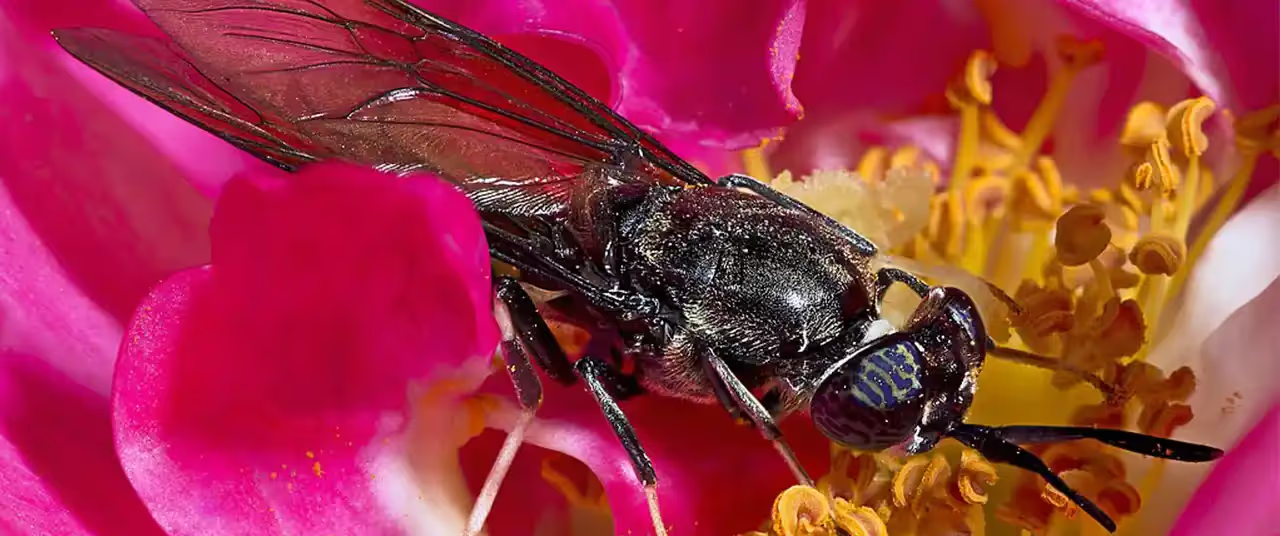
Far from being pests, the larvae of this insect can process trash and serve as nutritious feed for livestock
For most people, creepy crawlies evoke a sense of fear, if not disgust. And yet, bugs and insects form necessary links in food chains. They feed directly on plants and convert their food into protein and energy–and when they are, in turn, eaten by birds, small mammals and fish, these predators absorb this plant protein that would otherwise remain inaccessible to them. Insects are also pollinators for over 80% of flowering plants in the world–many of which have no way to self-pollinate: their existence depends on insects.
Some insects may even contribute to solving a looming global issue: waste disposal. As populations increase, so does waste generation—but the land to absorb all of it remains finite. With a projected 1.6 billion demographic rise by 2050, most dwellings in India are strewn with mountains of garbage along the peripheries of urban centres. It only makes the urgency more apparent: how we do away with organic trash needs to be rethought.
A lack of waste disposal isn’t just an eyesore: it also poses severe damage to citizens and the environment, by way of issues such as respiratory and gastric illnesses and contamination of groundwater. Currently, waste disposal, particularly in India, is mostly through landfills–which quickly become hotspots for methane emissions, given the fact that almost 40% of an urban dweller’s waste is composed of organic materials. A 2021 report by the NITI Aayog estimates that urban India produces between 130,000-150,000 metric tons of municipal solid waste everyday, with each person disposing 330 to 350 grams.
And while large-scale waste treatment and disposal policies are in play, one unexpected solution may be buzzing around the waste itself: flies. Though we typically associate flies with a lack of hygiene, the Black Soldier Fly (BSF) may just be able to do the opposite–consume and treat organic waste, especially food scraps and even manure, without the release of any emissions. They even do this faster than conventional methods of management.
Also read: Why neem oil is the OG pest buster
Known as the Hermetia illucens in the scientific community, this South American bug species can be found across the globe now. According to a research facility in Dimapur, it is the larvae of BSF that ingest the waste (up to 4 times waste than their body size) and convert it into protein, reducing the weight of the waste by 50%. The waste that these flies can’t consume includes wood, high-cellulose materials and plastics.
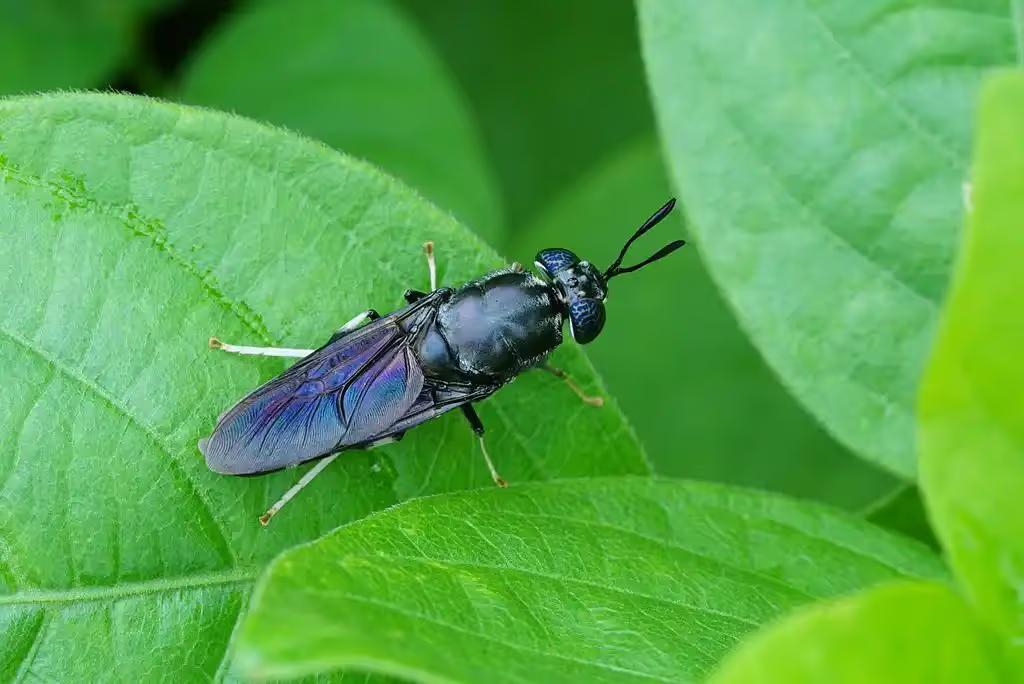
The life cycle of the Black Soldier Fly is about 45 days. The larvae themselves mature over a period of two weeks–after which, some of them are kept aside to repopulate the colony, and the rest are used as feed for livestock–they are an excellent source of alternate food for poultry like chicken. This nutrition sustains them when they reach adulthood. An adult fly can live for 5-8 days, and the females can lay up to 800 eggs!
Rearing Black Soldier Flies creates little waste. On the other hand, it encourages the maintenance of natural ecosystems. These flies are quite unique: unlike the usual fruit fly which may be a carrier of disease, the black-soldier fly is a non-invasive species, which is not a vector. They’re also not damaging to crop health.
For small-scale farmers, who are stretched for both land and resources, rearing insects can be a creative solution. Densely populated and requiring little energy, they occupy little land and consume even less feed. They’ve even been raised in humble two-bedroom apartments. For this reason, reports by the UN have suggested that these bugs may define farming in the coming decades. Just one kilogram of larvae can consume up to 30 kilograms of waste, approximately four times their body matter in organic waste. Even their byproduct is useful: the excreta, called frass, is a nutrient-rich biofertiliser that aids soil enrichment.

The role of BSF as feed for poultry and livestock cannot be overlooked either. India is actually one of the largest suppliers of this feed. These flies convert compost and waste into vitamin-rich fodder, given their high waste-to-biomass conversion efficiency. The feed has even been correlated with higher productivity and well-being in chickens, as it promotes better gut health. Requiring high temperatures and moderate humidity to rear, Black Soldier Flies grow best in around 27°-30°C with 70% humidity. Ideal conditions such as these decrease the larvae harvest period from 45 days to 38 days. Fluctuations in this, though, don’t spell disaster–they just aid in mirroring natural habitats.
In Europe, insect-feed has a much larger consumer base than in India, which has led to the development of the world’s largest facilities there. EU food regulation allows at least nine species of insects to be used for animal feed purposes. The industry as a whole is expected to grow in the future, given the increasing consumption of fish and meat. However, it remains nascent in India, attributed to little government involvement, knowledge gaps within the scientific community as well as religious beliefs.
Also read: The 'plant' doctor will see you now
The rearing of BSF larvae has been discovered by many agriculture and ecology enthusiasts in India. In Dimapur, Waste to Protein has utilised insects to break down household organic waste in Imphal, the state capital of Nagaland.
They begin by collecting Black Soldier Flies from the forests, after which the eggs laid by the female flies are placed in a mix of wheat bran and water, to hatch. Then, the larvae feed on food waste. Some continue to reproduce while others become feed for livestock. Once the organic waste is reduced rapidly by the larvae–around 80 kilograms in 15 days–the remains can be used as compost or fertiliser. Though Waste-to-Protein may be a small project, it has processed at least 1.2 tonnes of waste monthly in 2023.
Two years ago, the biotech startup LoopWorm–which raised $3.4 million in its seed round–also cemented this process. They started small, by rearing Black Soldier Flies in a small flat. Eventually, they expanded to a facility in Bangalore, producing over 2000 tonnes of insect protein. Their focus is more on the production of poultry and aqua feed.
The founders Abhi Gawri and Alok Bagaria believe that India has the trappings to develop a symbiotic and beneficial relationship between insects and farming, given the tropical temperatures and abundance of organic waste. While both agree that mastering the production process has a steep learning curve, they argue that India is suited to insect rearing by virtue of its natural ecosystem and humidity levels, unlike North America and Europe, where such conditions have to be mechanically regulated and tend to account for a significant portion of input costs.
This makes the process of setting up significantly more cost-efficient in South Asia.
The process has been used at a larger scale–as seen with the Kochi Corporation’s Brahmapuram plant, where alternative waste management is being explored. The facility reported in 2024 that around 8,000 tonnes of food waste was consumed by larvae in just 6 months–the remnants can be sold as fertiliser and the process emits zero greenhouse gases like methane. However, for independent and commercial insect-for-feed ventures, it has been difficult to find funding and then ready consumers–given the traditional mindset of Indian livestock businesses as well as a lack of regulatory frameworks for insect farming on the policy end.
Hence, they look to foreign markets and cut corners by relying on manual labour. The lack of government incentive for investment R&D has discouraged much competition in the industry – looking at the heavy subsidies offered in turn for fertilisers, the aim seems to be to kill insects, and not to protect them.
BSF farming may signify a cleaner, more hygienic future for India. With public urban spaces being slowly engulfed by trash and garbage, the need for a sustainable method of waste management becomes more urgent. Moreover, as rural India still reels under the pressures of a non-existent waste management system, insect farming in particular, points to the possibility of a holistic approach to disposing of organic waste, which is in sync with agriculture.

Across states like Odisha and Kerala, ducklings are enabling rice farmers to do away with chemical pesticides
Ducks populate fable and lore—the idyllic scenery of nature always features a flock of ducks. Ducks are also an integral feature of farms where they are reared for their eggs and meat. Beyond poultry, this bird remains a favourite of farmers who cultivate paddy in several regions across the world. But how did the mighty duckling come to swim in rice fields? The answer lies in a Japanese polycultural practice developed in the 1980s, which promotes sustainable rice production.
Japanese farmer and social entrepreneur Takao Furuno conceptualised ‘Aigamo’, meaning a cross-breed of two species of ducks. It was originally developed in the late 1980s to simplify pest control and weeding, until Furuno crystallised it in his book, The Power of Duck: Integrated Rice and Duck Farming (2001). Committed to the practice of organic farming after being inspired by Rachel Carson’s Silent Spring (1962) which criticised indiscriminate use of pesticides, Furuno re-discovered duck-farming and decided to pivot from hand-weeding. It calls for the introduction of young ducklings and the planting of paddy seedlings to simultaneously increase the rice yield and minimise the excessive application of pesticides.
At a time when we’re witnessing erratic climate conditions and an excessive reliance on chemical-use farming, small farmers could reinvent traditional practices such as Aigamo, that use natural symbiosis and available resources for food and financial security.
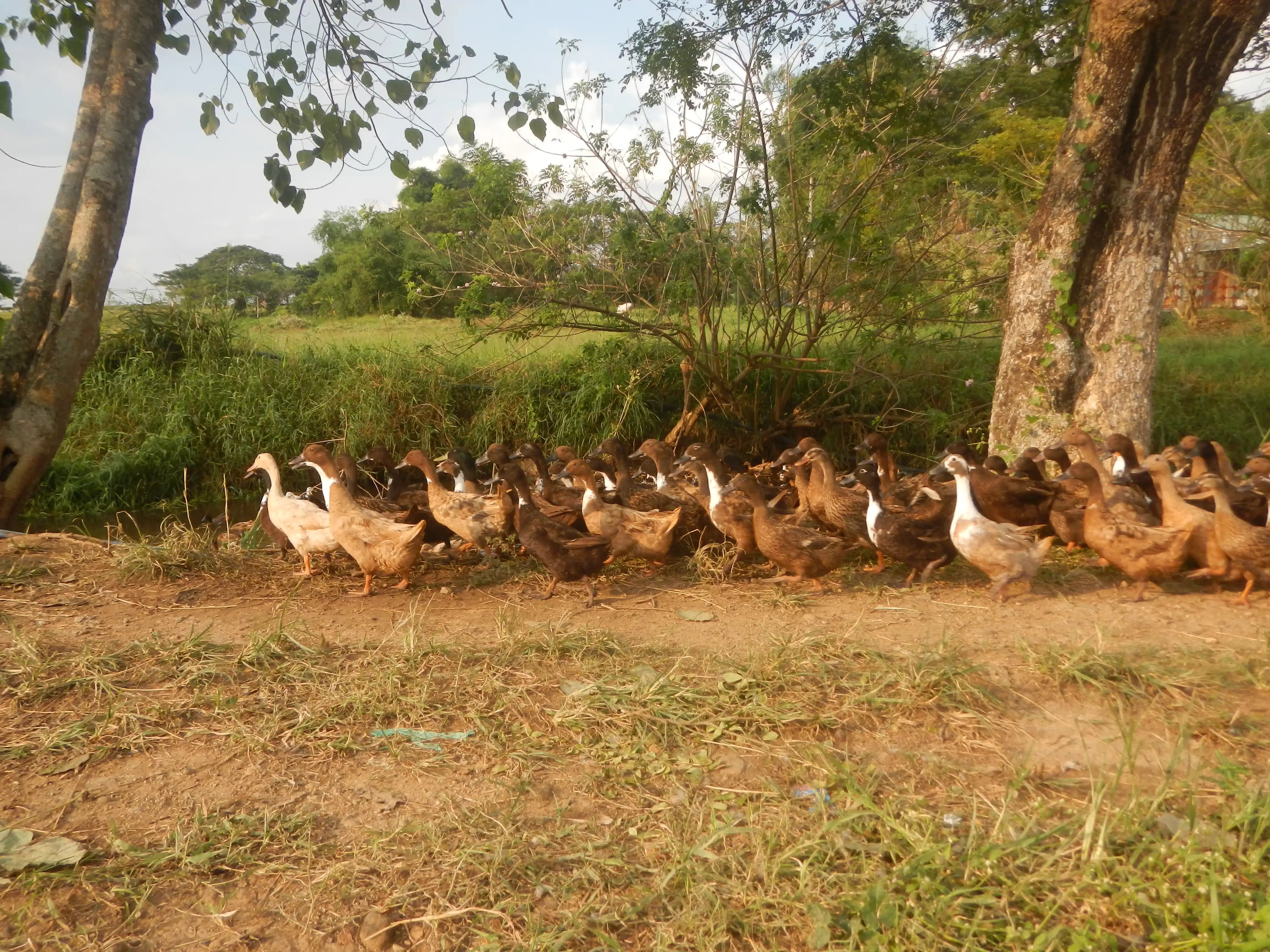
Also read: Why neem oil is the OG pest buster
The ducklings are introduced to the field at a young stage, which allows them to mature along with the paddy crop. They protect the crop from pests and weeds by consuming them and fertilising the soil with their organic waste. Their movements and wading also improve nitrogen absorption and ameliorate soil quality, in addition to aiding oxygenation. According to a 2020 report by the Food and Agriculture Organization of the United Nations (FAO), this method has been proven to increase yields by 20%. This saves time and money – farmers are freed from manual weeding, and natural pest control reduces cost, a boon for small-scale farmers.
However, deploying natural mechanisms isn’t the only benefit; it’s the fact that this contributes to ecosystem formation. As rainfall patterns become harder to predict and resources become scarce, the food supply has become insecure. But duckling-peddled paddy farms encourage economic and nutritional security—once the paddy has matured, ducks are moved out and instead used for the supply of meat and eggs. Moreover, ducks have also been linked with more weather-resistant crops; they constantly peck at seedlings and help plough the soil, increasing oxygen absorption.

Ardhendu Sekhar Chatterjee, the founder of Development Research Communication and Services Centre (DRCSC), a West Bengal-based non-profit, explains the technicalities of the low-cost process, which requires the paddy seedlings to be planted around 15 centimetres apart for the ducks to wade through and for the field to retain rainwater. It is argued that this raises yield by around 10% to 20%.
Aigamo has become an inventive way for farmers looking to manage costs and create sustainable farm networks, as seen in the case of this Vermont-based farmer, inspired by Hokkaido’s rice production despite cold temperatures through the development of cold-resistant rice varieties. This isn’t to say the method is foolproof; ensuring the right breeds of ducks and rice crops are utilised, the removal of the birds from the fields at the right time, as well as ensuring duck health, all these factors determine whether this ecological process done manually will succeed or fail.
Also read: Do-nothing farming: The Masanobu Fukuoka story
In the Indian context, efforts to promote the use of ducks in rice farming are mainly concentrated in eastern states such as Odisha and Bengal, as well as Kerala. The widespread application of rice-duck farming is more suited to the environment and more effective for marginal land owners.
A 2021 report by the National Rice Research Institute in Cuttack aims to promote paddy-duck farming, particularly in the lowland regions of eastern India, where rice is an agricultural mainstay but with the addition of fish. Indian farmers are encouraged to adapt the technique to regional contexts, utilising livestock efficiently. The process is referred to as rice-fish duck integrated farming or RFDIFS. The system aims to alleviate the lives of marginal and tribal farmers by synergistically combining the three components while also considering the efficient use of available resources to mitigate the impact of climate change.
There are examples of how rice-duck farming allows marginal groups with limited financial means to find success. The Basak sisters have adopted this method in the Keotal village of Uttar Dinajpur in Western Bengal. The duo has broken into paddy farming despite patriarchal barriers of agrarianism and widespread family criticism. The practice proved fruitful when it delivered about 35-40 quintals of organically grown paddy in 5 bighas of land during their harvest in 2018.
More women in regions surrounding Keotal, like the Dohole and Balaoul villages, have taken to sustainable agricultural production under the collective of Narishakti Jaibochasi Mahila Dal or Woman Power through Organic Farming. They combine their resources and land to cultivate chemical-free paddy. Though the total area cultivated amounts to only 45 bighas, the zero input cost allows them to profit more per bigha.
The practice is a part of local agrarian tradition in the Thrissur-Ponani Kole wetlands in Kerala, where local duck farmers and paddy cultivators collaborate for rice production – for ducks as well as migratory birds the fields offer an excellent source of food.
However, cutting corners isn’t the only incentive. Farmers seem aware of the hazardous nature of chemical pesticides and fertilisers, which deteriorate soil quality and decrease water retention. Of the 234 registered pesticides in India, at least 24 have been identified as potential carcinogens by the United States Environmental Protection Agency. Ecological sustainability is just as important as financial sustainability for those involved in agriculture. The issue of methane emissions, released in large amounts during rice cultivation, is also resolved by the symbiotic process of duck use in growing paddy.
With the threat of food insecurity looming due to shifting rain patterns, ecology experts like Nira Ramachandran argue, the question isn’t just about alleviating financial burdens, but applying holistic techniques that don’t make ecology bear the brunt of efficiency. While rice-duck farming has little evidence of widespread application and may even be ill-suited for particular areas lacking adequate markets for duck meat, it signifies a need to make the best use of what we have.
Also read: The 'plant' doctor will see you now

The four-ingredient tonic works wonders for mango and apple saplings
Growing food is a risky venture that comes with a tight profit margin. The need to protect the crops goes hand in hand with the need to use chemicals for resistance against pests and pathogens. But on farms across India, a powerful organic solution is popular among farmers who want to keep chemicals away from their land: Beejamrutha. This natural seed tonic is an easy-to-make alternative for a broad spectrum of seed-borne pathogens. An ancient organic formulation, Beejamrutha is a four-ingredient, cost-effective method that has proven to enrich seeds before they are sown.
This exercise is not uncommon–modern agricultural practices call for seeds to be sprayed with or dipped in chemicals before being sown, to improve germination and maximise the seed’s potential. But chemical seed treatments are harsh on the soil; they disrupt the microbiome that thrives in the earth, as well as harm the health of the soil. Farmers are no strangers to these side-effects of chemical seed treatment, and it thus comes as no surprise that many choose to nurture their seeds with a natural seed tonic like Beejamrutha for its more healthful properties.
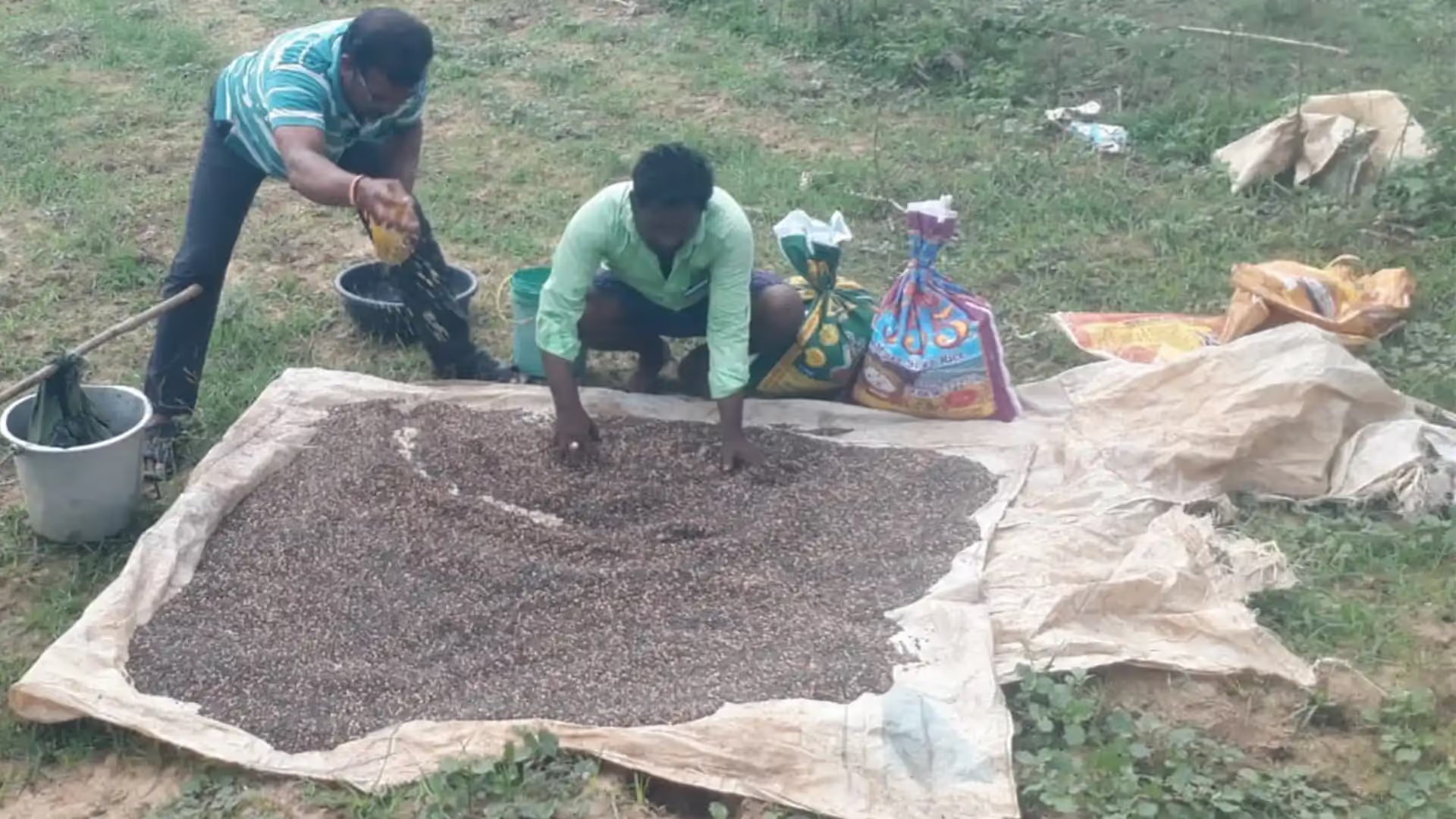
Beejamrutha, also called "Beejamrit," is a treatment solution prepared from the following natural ingredients: cow dung, cow urine, lime, soil, and water. Each ingredient has a role here: their individual properties help improve the biological activity of the seeds. Also, when used over a period of time, cow dung and urine paired with other food items have shown to gradually change the soil health, too.
Cow dung (also called manure) is a key ingredient of the solution: not only is it required in the largest proportion, it also forms the base of the solution. The quality of the cow dung is highly dependent on the fodder fed to the cows, because it’s made up mostly of digested grass. The higher the nutritional value of the grass the livestock feeds upon, the more effective the cow dung. Researchers have pointed out time and again that manure from indigenous Indian cow breeds contains higher amounts of calcium, phosphorus, zinc and copper than the cross-breed cow.

Cow manure has proven to be near wondrous for agriculture. It has 3% nitrogen, 2% phosphorus, and 1% potassium—3-2-1 NPK, making it a suitable fertiliser for almost all types of plants and crops. This is due to the nutrients’ ability to naturally restore balance to the earth. Nitrogen (N) is the rockstar nutrient for leafy growth, making crops green. Phosphorus (P) is the root booster and helps the crop develop a strong foundation. Potassium (K) is the star of nutrition, ensuring your plant is nutritionally healthy.
The next ingredient, cow urine, has excellent germicidal power, and also hosts antibiotics and antimicrobial activity. It can, therefore, kill a variety of germs as well as boost immunity.
Lime powder is added to this, to adjust the pH level of the mixture and create a more alkaline environment–this is considered optimal for the beneficial microbes present in the cow dung and urine, allowing them to flourish and effectively colonise the seeds when used as a seed treatment.
Also read: Humus 101: Why this organic matter is crucial
These ingredients, often available on farms, combine to create a potent mix of Beejamrutha–a formulation that not only boosts seed germination rates but also protects young roots from fungal infections and diseases, particularly during the rainy season. Other natural seed tonics offer similar relief to the soil and plants, and this hasn’t gone unnoticed. According to the National Mission on Natural Farming, approximately 18.75 lakh farmers are using inputs such as Jeevamrit, Beejamrutha, and other natural tonics. In Andhra Pradesh, data from the NITI Aayog shows that 40–50% of farmers practicing natural farming use seed tonics. Through the Andhra Pradesh Community-managed Natural Farming (APCNF) initiative, over one million farmers have adopted these methods. In Maharashtra, too, an estimated 50–60% of natural farmers use seed tonics. The reliability and efficacy of Beejamrutha is further amplified by the fact that a large section of farmers use such seed tonics, even though they aren’t subsidised or standardised by the regulatory frameworks that oversee natural and organic farming in India–whereas fertilisers are.
Among other benefits, seeds treated with Beejamrutha gain immunity against soil-borne pathogens, ensuring a strong start for crops like rice, wheat, maize, and vegetables. It also works wonders for saplings of fruits such as mango, banana, and apple. Additionally, Beejamrutha improves soil quality by enhancing its microbial activity, helping plants absorb nutrients more effectively.
A study on pea seed germination showcased its remarkable efficiency: seeds treated with Beejamrutha had a 92% germination rate, while untreated seeds stood at 56%.
Also read: Can nitrogen-fixing plants replace synthetic fertilisers?
Despite its benefits, Beejamrutha is surprisingly easy to prepare. Here’s a step-by-step guide:
To treat seeds, soak them in Beejamrutha and stir gently for about two minutes. Then, spread the seeds under shade to dry them for six hours, before they are planted. For the best results, treat seeds in the morning and sow them in the evening. If you have extra tonic on your hands, store it in a cool, dark place to preserve its potency and prevent spoilage.

Saplings, too, can benefit from this process. Before transplanting them, dip the roots of the saplings in Beejamrutha to give them a protective boost.
Recognising the bio-stimulant benefits of this tonic, the Tamil Nadu Department of Seed Certification and Organic Certification is now urging farmers to adopt Beejamrutha. According to K. Kannan, a Seed Certification Officer in Madurai, this fermented solution’s ability to promote healthy crop growth makes it a vital tool for sustainable agriculture. “It’s cheaper, environmentally friendly, and easy to prepare,” he explains.
While some farmers may prefer the convenience of chemical seed treatments, Beejamrutha offers an affordable and more sustainable alternative. With just a bit of effort, it can be made at home, avoiding the cost and environmental impact of synthetic chemicals.
Also read: How biochar keeps soil alive for centuries
Nagesh, a vegetable farmer based in Tiptur, Karnataka, who has been preparing Beejamrutha for the last four years explained its preparation in great detail, highlighting what is required for a one-acre farm.
“It doesn't take much time to make Beejamrutha,” he says. All you need, Nagesh explains, is a 100 litre barrel–it can be cement or plastic but a metallic one should be avoided. Preparing the solution for a one-acre piece of land calls for 50 litres of water, 50 kilograms of cow dung (ideally sourced from local breeds like Hallikar and amritmahal), 5 litres of urine and 50 grams of lime powder. Apart from adjusting the pH levels of the solution, lime also contains calcium which blocks the transfer of disease from seeds to plants.
All of the ingredients need to be mixed thoroughly. Then the seeds which one wants to sow should be dipped in the solution for not more than five minutes and dried in shade. Once ready, the solution lasts for 2-3 days; it needs to be prepared freshly.
As climate change continues to disrupt traditional farming practices, solutions like Beejamrutha are more relevant than ever. Not only do they reduce dependency on chemicals, but also look after the soil and ensure its long-term fertility. For farmers grappling with the challenges of erratic weather, Beejamrutha provides an additional layer of protection to maintain crop immunity when it’s needed most.
Please try another keyword to match the results